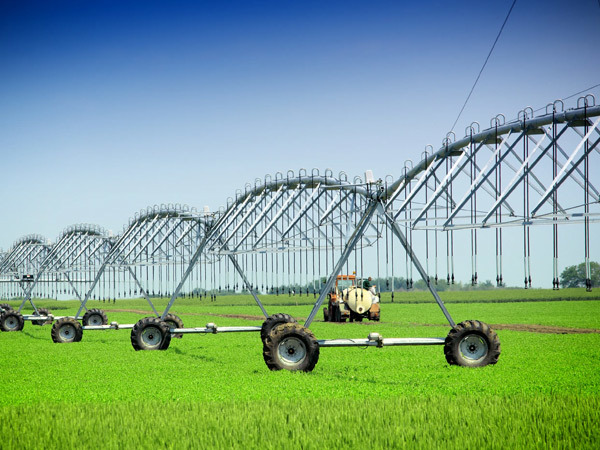The Advantages of Implementing Center Pivot Irrigation for Sustainable Agricultural Practices
Release time:
Oct 24,2025
The Advantages of Implementing Center Pivot Irrigation for Sustainable Agricultural Practices Table of Contents 1. Introduction to Center Pivot Irrigation 2. What Is Center Pivot Irrigation? 3. Historical Context of Center Pivot Irrigation 4. Key Benefits of Center Pivot Irrigation 4.1 Water Conservation 4.2 Increased Crop Yield 4.3 Imp
The Advantages of Implementing Center Pivot Irrigation for Sustainable Agricultural Practices
Table of Contents
- 1. Introduction to Center Pivot Irrigation
- 2. What Is Center Pivot Irrigation?
- 3. Historical Context of Center Pivot Irrigation
- 4. Key Benefits of Center Pivot Irrigation
- 4.1 Water Conservation
- 4.2 Increased Crop Yield
- 4.3 Improved Soil Health
- 4.4 Labor Efficiency and Cost Savings
- 4.5 Positive Environmental Impact
- 5. How Center Pivot Irrigation Works
- 6. Implementing Center Pivot Irrigation in Your Farm
- 7. Challenges and Considerations
- 8. Conclusion
- 9. Frequently Asked Questions
1. Introduction to Center Pivot Irrigation
In the world of modern agriculture, efficiency and sustainability are paramount. As farming practices evolve, the need for innovative irrigation solutions has become crucial. **Center pivot irrigation** stands out as a transformative approach, enabling farmers to optimize water usage while enhancing crop yields. This article explores the myriad benefits of center pivot irrigation, highlighting its significance in sustainable farming practices.
2. What Is Center Pivot Irrigation?
Center pivot irrigation systems consist of a rotating set of pipes mounted on wheeled towers that pivot around a central point. This method allows for the **even distribution of water** over large crop areas. With its design, it facilitates efficient irrigation by delivering water directly to the crop roots, minimizing waste and evaporation.
Unlike traditional irrigation methods, which can often lead to overwatering or runoff, center pivot systems provide a controlled water supply tailored to the specific needs of the crops. This precision not only improves water efficiency but also enhances the overall productivity of the farm.
3. Historical Context of Center Pivot Irrigation
Center pivot irrigation technology emerged in the 1950s, revolutionizing agricultural practices in arid and semi-arid regions. Initially developed in the United States, it quickly gained popularity worldwide due to its efficiency and effectiveness. Over the decades, advancements in mechanization and automation have further enhanced the capabilities of center pivot systems, making them a staple for sustainable farming.
Today, farmers across the globe utilize center pivot irrigation to manage their water resources better and adapt to changing climatic conditions. The historical evolution of this technology underscores its importance in modern agriculture and its role in addressing global food security challenges.
4. Key Benefits of Center Pivot Irrigation
Center pivot irrigation offers a plethora of advantages that contribute to sustainable farming practices. Below are some of the key benefits associated with this innovative irrigation method.
4.1 Water Conservation
One of the most significant advantages of center pivot irrigation is its ability to conserve water. Traditional irrigation methods often lead to significant amounts of water loss through evaporation and runoff. In contrast, center pivot systems deliver water directly to the plants, minimizing waste and ensuring that crops receive the necessary moisture without excess.
Studies have shown that center pivot irrigation can reduce water consumption by up to 50% compared to flood irrigation methods. This conservation not only helps farmers save on water costs but also contributes to the **sustainable management of vital water resources**, particularly in regions facing water scarcity.
4.2 Increased Crop Yield
Farmers employing center pivot irrigation systems frequently report increased crop yields. The precise application of water allows for better soil moisture management, which is critical for plant growth. Additionally, the ability to irrigate larger areas efficiently enables farmers to grow more crops per season.
Research indicates that crops irrigated using center pivot systems can exhibit yield increases of 10-30% compared to those using traditional irrigation methods. This boost in productivity translates to higher profits and improved food security, underscoring the importance of this technology in modern agriculture.
4.3 Improved Soil Health
Maintaining soil health is vital for any sustainable farming practice. Center pivot irrigation contributes positively to soil health by promoting **uniform water distribution** and minimizing soil erosion. Because water is applied directly to the base of the plants, the risk of compaction and runoff is significantly reduced.
Moreover, the consistent moisture level provided by center pivot systems encourages healthy root development, leading to more resilient crops. Healthy soil is less susceptible to pests and diseases, allowing farmers to reduce their dependency on chemical fertilizers and pesticides, which further benefits the environment.
4.4 Labor Efficiency and Cost Savings
Center pivot irrigation systems enhance labor efficiency significantly. Once installed, these systems automate the irrigation process, reducing the need for manual labor. This automation not only saves time but also allows farmers to allocate their workforce to other critical tasks, increasing overall productivity.
In terms of cost savings, the reduced water usage and labor requirements associated with center pivot systems can lead to substantial financial benefits. The initial investment in a center pivot irrigation system is often recouped within a few seasons due to the increased efficiency and productivity it offers.
4.5 Positive Environmental Impact
Implementing center pivot irrigation contributes to a positive environmental impact by promoting sustainable practices. By reducing water waste and soil erosion, these systems help preserve local ecosystems and water bodies. Furthermore, the reduced need for chemical fertilizers and pesticides fosters a healthier environment for both crops and surrounding wildlife.
Additionally, as farmers adopt sustainable practices, they contribute to the fight against climate change. Center pivot irrigation enables more efficient land use, allowing farmers to grow crops in areas that may have been previously considered unsuitable for agriculture.
5. How Center Pivot Irrigation Works
Understanding the operational mechanism of center pivot irrigation is essential for farmers looking to implement this technology. The system consists of several key components that work together to deliver water effectively:
1. **Mainline and Lateral Pipes**: The mainline pipe carries water from the source to the pivot point. Lateral pipes extend out from the pivot point, distributing water across the crop area.
2. **Wheeled Towers**: The wheeled towers support the lateral pipes and facilitate movement around the pivot point. These towers enable the system to rotate, allowing for uniform coverage of the field.
3. **Sprinkler Heads**: Located along the lateral pipes, sprinkler heads release water in a controlled manner, ensuring that crops receive the appropriate amount of moisture.
4. **Control System**: Modern center pivot irrigation systems often come equipped with automated control systems that monitor soil moisture levels and adjust water delivery accordingly. This technology enhances efficiency and ensures optimal irrigation practices.
6. Implementing Center Pivot Irrigation in Your Farm
Implementing center pivot irrigation systems requires careful planning and consideration. Below are essential steps for farmers looking to incorporate this technology into their operations.
6.1 Choosing the Right System for Your Land
Selecting the right center pivot irrigation system involves assessing various factors, including field size, crop type, and soil characteristics. Different systems are available to suit specific needs, from low-pressure to high-pressure models. Consulting with irrigation specialists can help farmers make informed decisions tailored to their unique situations.
6.2 Installation Process
The installation of a center pivot irrigation system typically involves several steps, including site preparation, laying out the mainline, and positioning the wheeled towers and lateral pipes. It is crucial to follow manufacturer guidelines and consult with professionals to ensure a proper setup.
6.3 Maintenance and Care
Regular maintenance is essential for the longevity and efficiency of center pivot irrigation systems. Farmers should conduct routine inspections, check for leaks, and clean sprinkler heads to maintain optimal performance. Proper care not only extends the lifespan of the system but also ensures that it operates at peak efficiency, maximizing the benefits of irrigation.
7. Challenges and Considerations
While center pivot irrigation presents many advantages, it is essential to consider potential challenges. Factors such as initial costs, energy requirements, and the need for technical expertise can pose barriers for some farmers. Additionally, geographic and environmental conditions may impact system efficacy.
Farmers should conduct thorough research and seek guidance from irrigation experts to navigate these challenges effectively. Understanding both the benefits and potential drawbacks will enable them to make informed decisions regarding their irrigation practices.
8. Conclusion
In conclusion, center pivot irrigation stands as a vital tool in the quest for sustainable farming practices. Its numerous benefits, including water conservation, increased crop yield, and improved soil health, make it an attractive option for modern agriculture. By implementing center pivot systems, farmers can optimize their resources, reduce environmental impact, and enhance productivity.
As the agricultural landscape continues to evolve, embracing innovative technologies like center pivot irrigation will be crucial for meeting the demands of a growing global population and addressing the challenges posed by climate change. Investing in this irrigation method not only supports the farm's economic viability but also contributes to a more sustainable and resilient agricultural future.
9. Frequently Asked Questions
1. What types of crops can be irrigated using center pivot systems?
Center pivot irrigation is suitable for a wide variety of crops, including cereals, vegetables, and fruits. Farmers often choose specific crops based on their water needs and the local climate.
2. How much does a center pivot irrigation system cost?
The cost of a center pivot irrigation system can vary significantly based on size, components, and installation requirements. Farmers should expect to invest between $30,000 to $100,000 or more, depending on their specific needs.
3. How does center pivot irrigation impact soil health?
Center pivot irrigation positively impacts soil health by promoting uniform moisture levels and reducing erosion, leading to healthier crops and a more sustainable farming environment.
4. Can center pivot systems be automated?
Yes, many modern center pivot irrigation systems come equipped with automated control systems that monitor moisture levels and adjust water delivery accordingly, enhancing efficiency.
5. Are there any downsides to using center pivot irrigation?
Potential downsides include the initial investment cost, energy requirements, and the need for technical expertise for installation and maintenance. However, the long-term benefits often outweigh these challenges.
Learn more about industry dynamics
New customers enjoy 10% product discount
PRODUCT CENTER
CONTACT US
Address: 2-1-2301, Phoenix International Plaza, High-tech Zone, Jinan City, Shandong Province
Quality of service to win customer satisfaction


Shandong Yihe Agricultural Technology Co., Ltd.




